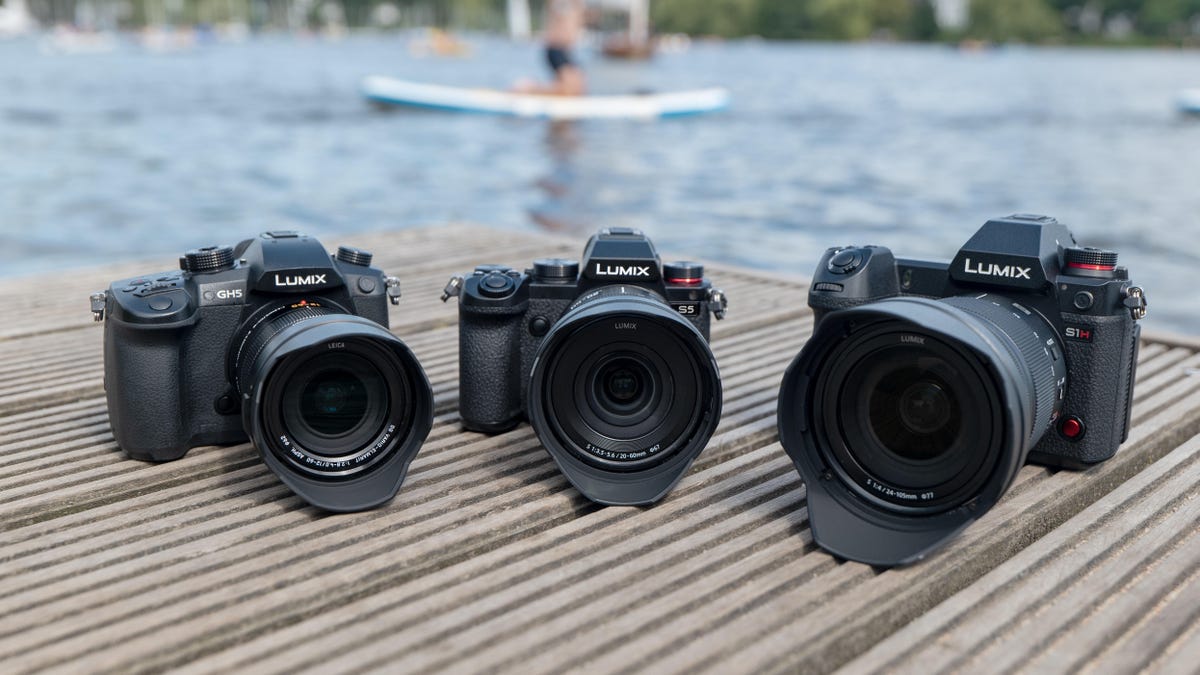 Why You Can Trust CNET
Why You Can Trust CNET Panasonic Lumix S5 $2,000 full-frame mirrorless leans toward video
The camera has a lot of the video capabilities we've come to expect from Panasonic.

With the Lumix S5 (middle) Panasonic crammed a full-frame sensor of a camera the size of the S1H (right) into a body the size of the much smaller GH5.
By shaving off a little here and a little there, Panasonic shaved about $500 off its previous least-expensive full-frame mirrorless, the Lumix S1 , to create the Lumix S5. Intended to appeal to creatives looking for a balance between video and photo capability, the $2,000 S5 takes on the Sony A7 III, as well as the cheaper Nikon Z5 ($1,400) and Canon EOS R ($1,800).
It's expected to ship in mid-September for $2,000 body-only or in a $2,300 kit with the new Lumix S 20-60mm f3.5-5.6 lens -- a slow lens priced to match the cheaper camera better than the Lumix S Pro lenses. Panasonic plans to bring out a similarly targeted 70-300mm f4.5-5.6 and four key primes in the future
Using the same sensor and autofocus system as the S1 with similarly performing image stabilization, the S5 skimps by with smaller, lower-resolution viewfinder and back displays, lesser weather resistance and slower continuous-shooting speed of 7 frames per second versus 9fps. The body is more compact, partly due to the 2,200mAh battery compared with the S1's 3,100mAh version, but doesn't sacrifice the dual SD card slots. But it's smaller than the Z5 and roughly the same size and weight as the EOS R.
One place Panasonic didn't cut back is in video features. In addition to supporting 4K/30p, Anamorphic 4K and 1,920x1,080 HD, it comes with V-Log (with preview), HLG and VariCam Cine-like LUTs, 4K/30p 10-bit 4:2:0 internal and 4K/60p 4:2:2 over HDMI -- 4K/30p 8-bit can record internally with no time limit -- and dual native ISO sensitivities 640 and 4000. Plus, a future firmware update will deliver C4K recording and raw 5.9K video over HDMI to an Atomos Ninja V, and add tools like a vector scope and master pedestal adjustment.
Taking a cue from Olympus , Panasonic offers its own Live View Composite mode (interval shooting until the exposure looks the way you want). Like the S1, it can use minute movements of the image sensor stabilization system to generate a 96-megapixel High Resolution image.
In other respects, it's very similar to competitors, with a 24.2MP sensor, articulating LCD and so on. Given its feature set and sensor quality, $2,000 seems like the right price for it, though I'd wait until all the pesky performance details have come in before firming up that opinion. But unless it's a lot worse than the A7 III it's probably going to be a better choice for the same money.

